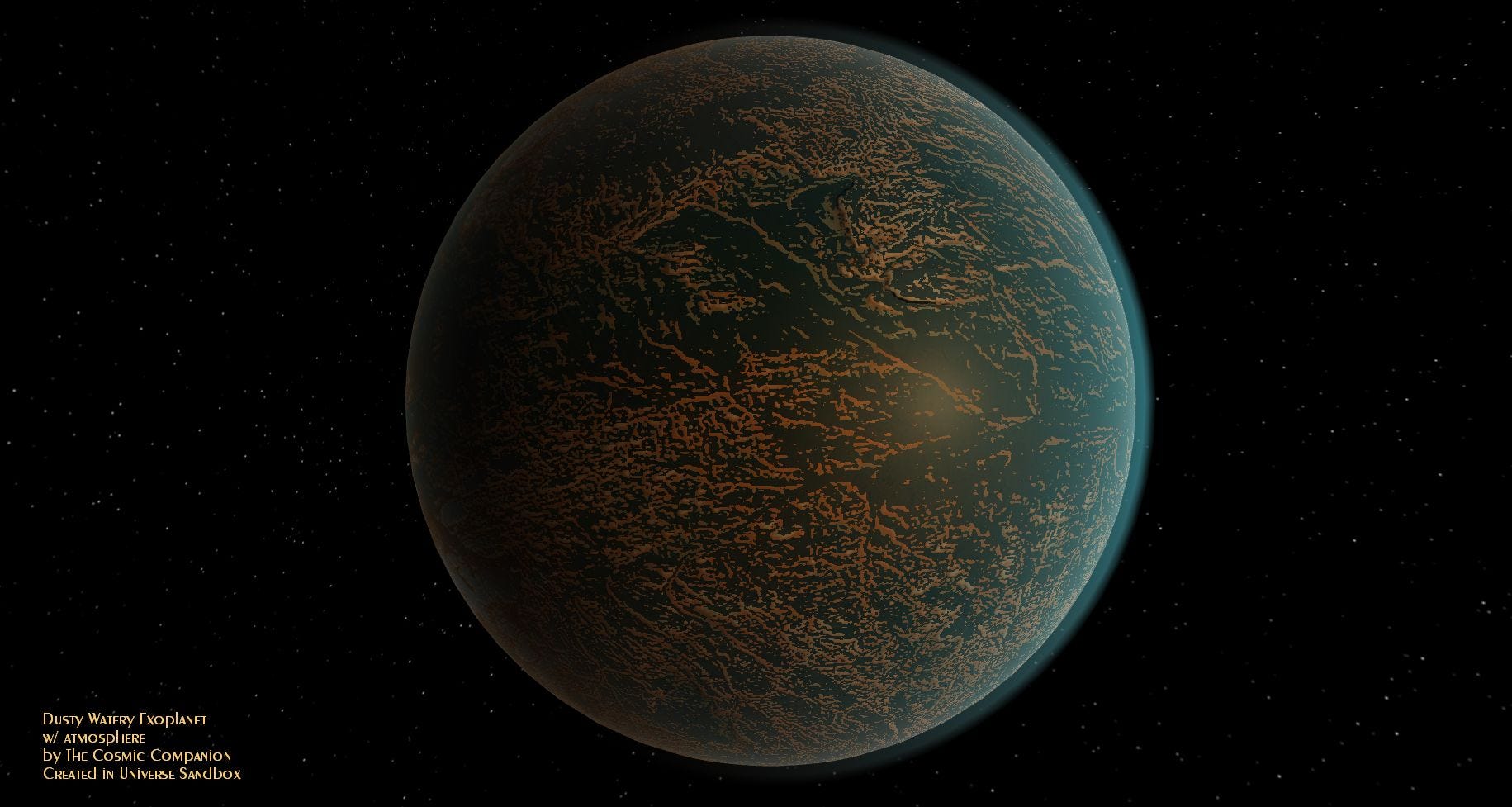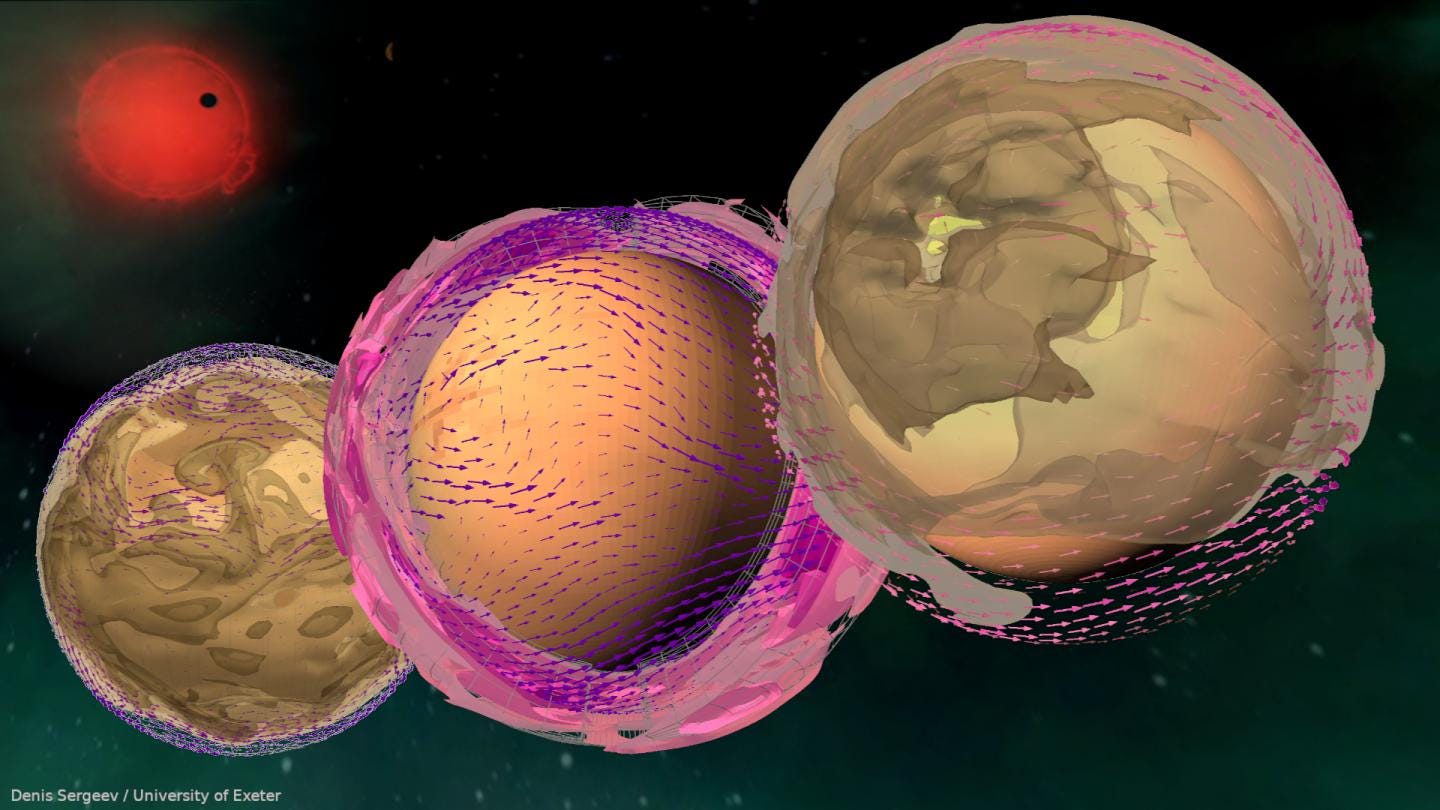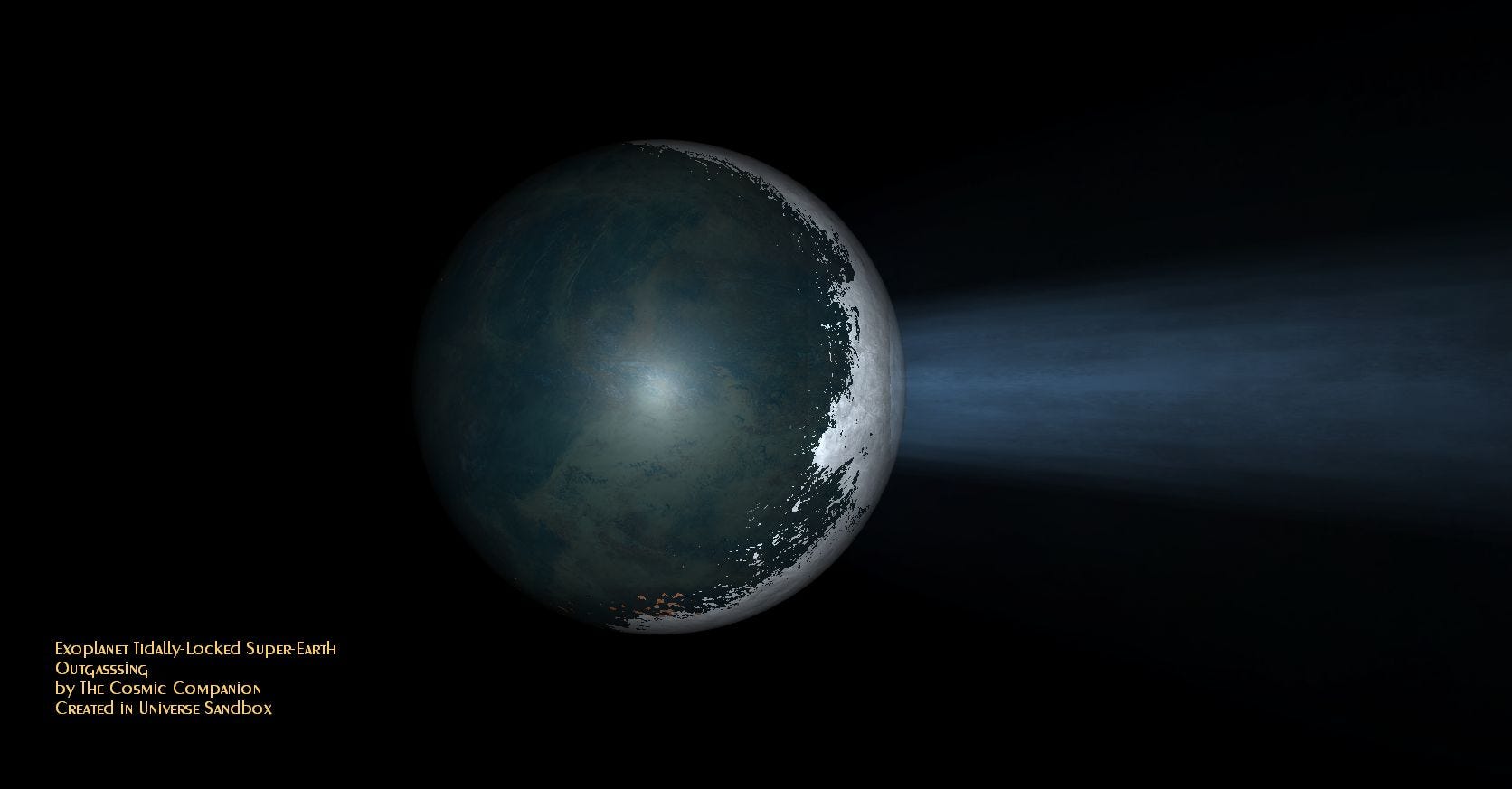
Dusty worlds like the desert planet Arrakis from Dune may be common throughout the galaxy. Some of these worlds, harboring large quantities of dust in their atmospheres, maybe likely places to find life, a new study concludes. However, these same dusty conditions also make finding evidence of life on these worlds more challenging for astronomers.
Researchers modeled three forms of exoplanets, each with varying amounts of dust in their atmosphere. The study found that dusty atmospheric conditions could insulate a planet, increasing the range of distances at which life could form, making the development of life more likely on these planets, if the planet is close enough to its parent star.

Planets which orbit close to cool, red stars (known as red dwarfs or M-dwarfs) are likely to be tidally-locked to their stars — a single face of these worlds would permanently face the star just as one side of the moon always faces Earth. These conditions would result in half the world being kept in constant daylight while the other half experiences perpetual night.
Recent studies suggest these tidally-locked worlds are the most common configuration of habitable worlds around these cool, diminutive stars.
[Read: Why these 4 planets are getting as much X-ray radiation as 10,000 suns]
Planets in the Goldilocks region around their star (where temperatures are neither too hot, nor too cold, for liquid water) and which are large enough to hold onto an atmosphere are likely to become water worlds, research suggests.
High concentrations of dust in the atmospheres of these worlds would serve both to cool the hot side of the planet and warm the frigid side. Planets which would otherwise be too hot or too cold for life may become more temperature, researchers concluded.

“On Earth and Mars, dust storms have both cooling and warming effects on the surface, with the cooling effect typically winning out. But these ‘synchronized orbit’ planets are very different. Here, the dark sides of these planets are in perpetual night, and the warming effect wins out, whereas on the dayside, the cooling effect wins out. The effect is to moderate the temperature extremes, thus making the planet more habitable,” said Dr. Ian Boutle of the University of Exeter and the United Kingdom’s Meteorological Office.
The habitable zone around a star represents the range of distances at which water is most likely to pool on the surfaces of worlds, forming ponds, rivers, and seas.

On worlds which are tidally-locked to their star, dust cools the heated side of the planet, while warming the night side. This increases the size of both sides of the habitable zone around a given star for these worlds. Planets that are not tidally-locked to their parent star experience cooling around their globe, meaning these planets must be closer to their star than normal for bodies of water to form.
At the inner edge of the habitable zone of our own solar system, Venus may have once had large quantities of water which were lost to space long ago. On the other side of our local Goldilocks zone, Mars was once a water world that lost its oceans to space long ago.
As planets heat and oceans boil off to space, the process can release large amounts of dust to the air. This process, known as a negative climate feedback, can temporarily cool the planet, slowing the loss of water.
“Dust is raised from any land surface that is relatively dry and free from vegetation. Dust can not only cool the surface by scattering stellar radiation, but also warm the climate system through absorbing and emitting infra-red radiation,” researchers describe in an article published in the journal Nature Communications.
Life can really be a gas, man…
As astronomers search planets around distant stars for signs of life, they look for the presence of methane and other chemicals at levels higher or lower than expected from a world without life.
Mineral dust is known to play a significant role in shaping the climates of Earth and Mars. The same atmospheric dust that makes life more likely in other worlds, could also make finding such life more difficult.
“The desert is a place of bones, where the innards are turned out, to desiccate into dust. The ocean is a place of skin, rich outer membranes hiding thick juicy insides, laden with the soup of being… Both worlds are deceptive, dangerous. Both, seething with hidden life.”
— Vera Nazarian, The Perpetual Calendar of Inspiration
Simulations showed that high concentrations of dust in the atmospheres of exoplanets make detection of typical biomarkers — notably methane and ozone — more difficult. The NASA video below shows a look at how the upcoming James Webb Space Telescope (JWST) and what it might teach us about the atmospheres of worlds orbiting distant sunInvestigators on this new study suggests that dust concentrations in the atmospheres of distant worlds should be considered when looking at the potential habitability of planets around other stars.
“Airborne dust is something that might keep planets habitable, but also obscures our ability to find signs of life on these planets. These effects need to be considered in future research,” explained Professor Manoj Joshi of the University of East Anglia in Norwich, England.
On tidally-locked worlds, atmospheric dust could provide a blanket for the nighttime side of worlds, while offering shade on the sunlit half of the globe. By recognizing how this dust affects the climate of alien worlds, we come closer to being able to recognize signs of life on distant planets.
This article was originally published on The Cosmic Companion by James Maynard, founder and publisher of The Cosmic Companion. He is a New England native turned desert rat in Tucson, where he lives with his lovely wife, Nicole, and Max the Cat. You can read this original piece here.
Astronomy News with The Cosmic Companion is also available as a weekly podcast, carried on all major podcast providers. Tune in every Tuesday for updates on the latest astronomy news, and interviews with astronomers and other researchers working to uncover the nature of the Universe.
Read next: Reliance Jio has raised more money in 2020 than all Indian tech startups combined in 2019
Celebrate Pride 2020 with us this month!
Why is queer representation so important? What’s it like being trans in tech? How do I participate virtually? You can find all our Pride 2020 coverage here.


